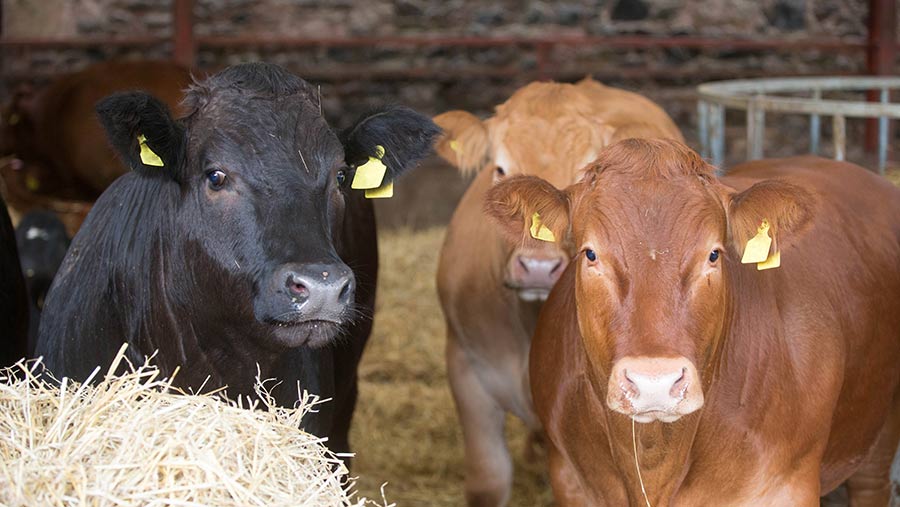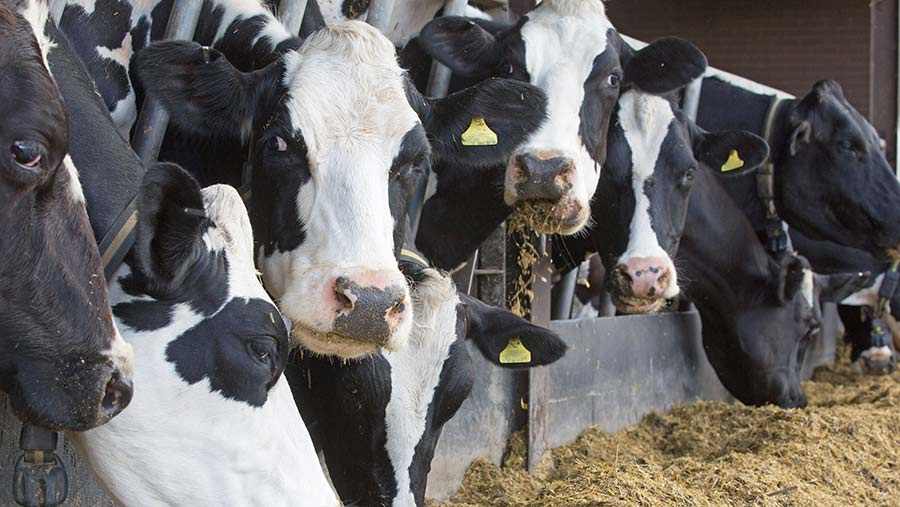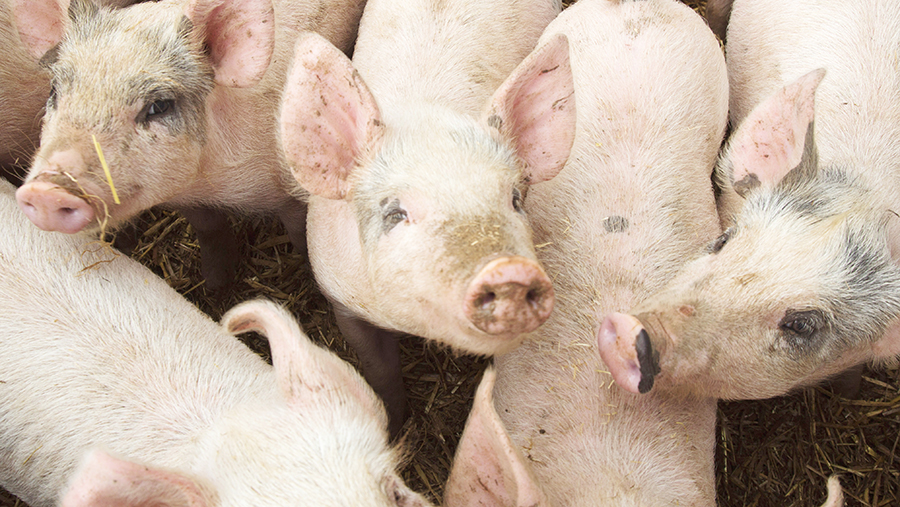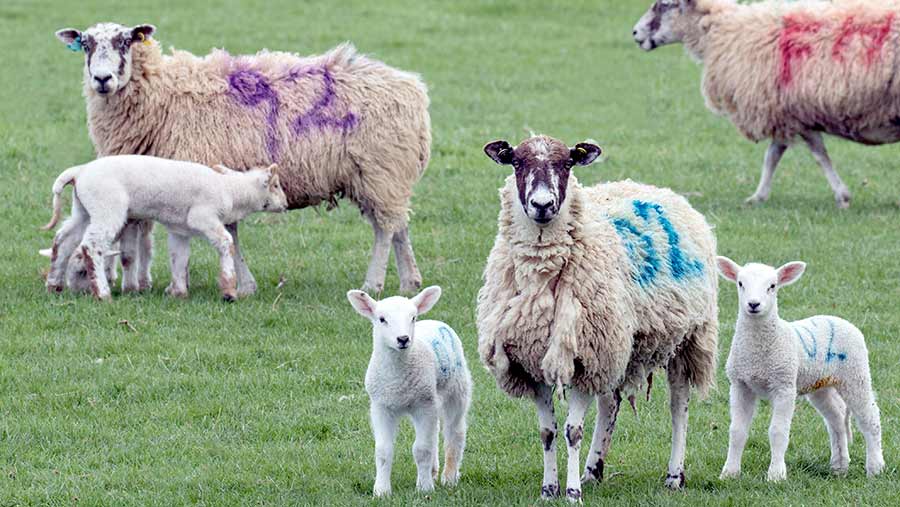Sector-specific antibiotics targets and what they mean
Sector-specific targets surrounding antibiotics use have been developed by a “targets taskforce” made up of farmers and vets and facilitated by the Responsible Use of Medicines in Agriculture Alliance.
Targets vary for each sector, depending on the state of play and data available, but all focus on improving health, reducing disease and reducing antibiotics use.
Hayley Parrott looks at what they mean for beef, sheep, dairy and pig farmers and re-caps on:
- What the new targets are
- How they will be achieved
- Areas where farmers can reduce use
The targets followed news that sales of active antibiotic ingredients had fallen to their lowest level since records began in the 1990s.
Glossary
- HP CIA highest priority critically important antibiotic (for human medicine).
- PCU population correction unit, which is used to help measure antibiotics use. PCU takes into account. the animal population as well as the estimated weight of each particular animal at the time of treatment with antibiotics.
- DDDVet defined daily doses for animals, the assumed average dose per kg animal per species per day.
- DCDVet defined course dose for animals, the assumed average dose per kg animal per species per treatment.
The beef sector

© Tim Scrivener
What are the targets?
- Work with the beef industry to monitor national sector antibiotics usage levels annually, aiming for a 10% reduction between 2016 and 2020 or reach a usage level of 10mg/population correction unit (PCU) by 2020, whichever is the lower level on a mg/PCU basis.
- Monitor use of highest-priority critically important antibiotics (HP CIA) (for human medicine) in the beef sector, aiming for 50% reduction between 2016 and 2020.
- Work with industry stakeholders (such as pharmaceutical companies) to monitor use of vaccinations targeting respiratory disease in cattle, aiming for an increase year-on-year between 2017 and 2020.
- The group will monitor available metrics of national cattle health and welfare alongside antibiotics use data to ensure reductions use do not negatively affect health and welfare.
- Determine a standard methodology for calculating on-farm antibiotics use in beef cattle for benchmarking within and between farms, taking account of different production systems.
- Promotion of training at farm and vet level.
- Dissemination of responsible use of medicines messages.
Next steps?
The beef antimicrobial use working group has been established as a sub-group of The Cattle Health and Welfare Group to help drive these targets.
Due to the lack of data and the fact sales data will not give a complete picture of use especially as many beef producers will also have other livestock for which antibiotics are purchased, the group is looking into options for collecting antibiotics use data from the farm directly.
Hotspot areas
- Respiratory disease
- Calf scour
- Calf navel ill
- Mycoplasma
- Lameness
- Calving problems and caesareans
The dairy sector

© Tim Scrivener
What are the targets?
- To reduce the use of HP CIA injectables by 50%, from the baseline of 1.075 mg/PCU to 0.538.
- To reduce intra-mammary use of HP CIA by 50%, from the baseline of 0.332 defined course dose for animals (DCDVet) to 0.166. DCDVet represents the average number of courses per dairy cow using a standard course dose of four tubes per dry cow treatment and three tubes per lactating cow treatment.
- To reduce the usage of intra-mammary tubes on dry cows by 20%, from 0.842 DCDVet to 0.674.
- To reduce the usage of intra-mammary tubes on lactating cows by 10%, from the baseline of 0.808 DCDVet to 0.727.
- To increase sealant tube usage by 40%, from the baseline of 0.5 average number of courses per dairy cow to 0.7.
- To reduce total usage by 20%, from the baseline of 26.2 mg/PCU to 21.0
Next steps
The Dairy Antimicrobial Stewardship Group (DASG) was established by the NFU and Dairy UK in April 2017, to deliver the targets.
The group brings together stakeholders from throughout the UK dairy industry – farming, processing, veterinary and support functions, as well as farming unions.
The first step for the DASG is encouraging farmers to record electronically and deliver their data to a co-ordinating hub, while still pushing forward with other measures which will help achieve the targets.
See also: How Dutch farmers reduced antibiotics use by 60%
Hotspot areas
- Selective dry cow management
- Pneumonia/respiratory issues in youngstock
- Digital dermatitis and foot-baths
- Avoiding prophylactic use
- Eliminating bovine viral diarrhoea and persistently infected animals
The pig sector

© Tim Scrivener
What are the targets?
-
- Reduce usage in mg/PCU. Starting with the 2015 baseline level of 263.5mg/PCU, the annual targets are:
- Year one reduction of 35%: 2016 target 171mg/PCU
- Year two reduction of 25%: 2017 target 128mg/PCU
- Year three reduction of 10%: 2018 target 115.5mg/PCU
- Year four reduction of 10%: 2019 target 104mg/PCU
- Year five reduction of 5%: 2020 target 99mg/PCU
This represents a five-year reduction target up to 31 December 2020 of 62.4% across the industry. The report states such a reduction can be used as a guide for individual farms irrespective of their starting levels and acknowledges the highest users, especially those who have yet to embrace the concept of reducing usage, may have to bear a disproportionate share of the total planned reduction.
2. Reductions in use of HP CIA. No numerical targets have been set because the use of HP CIAs is already low and it is anticipated it will remain that way unless any anomalies occur, such as novel or re-emerging diseases and a change in the availability of therapeutic zinc oxide in the EU.
Next steps?
Antibiotics use will be monitored via the electronic medicine book for pigs (eMB Pigs) for whole industry usage, but the report stated it is yet to be decided how and who will carry out individual farm monitoring.
Hotspot areas
- Move away from in-feed medication to more strategic water or systemic treatments
- Biosecurity
The sheep sector

© Tim Scrivener
What are the targets?
- Monitor national sector antibiotics usage levels aiming for a 10% reduction. Based on the data available, the target represents a mean usage figure below 10mg/PCU by 2020.
- Monitor and reduce use of HP-CIAs, aiming for a 50% reduction. the target represents a mean HP CIA usage figure below 0.03mg/PCU by 2020.
- Co-ordinate collation of antibiotics usage data in the sheep sector. Vets and the industry to be given access to an antimicrobials-use calculator to encourage common calculation techniques and drive a co-ordinated approach to the central collation of usage data by the sheep sector.
- Increase uptake of the five-point plan to control lameness within the sheep sector, measured by an increase in foot-rot vaccine sales of 5% a year over the next five years.
- Encourage the use of vaccination to control enzootic abortion in ewes, with clear guidance that routine antibiotics use is inappropriate for abortion control and an aim to increase vaccine sales by 5% per year over the next five years.
- Reduce antibiotics use in neonatal lambs by avoiding using routine prophylactic antibiotics in neonatal lambs except in high-risk situations, as assessed in the veterinary flock health plan. Aim to decrease sales by 10% per year over the next five years.
- Deliver a knowledge exchange plan to tackle vet and farmer behaviour, particularly with respect to the “hotspot” issues, such as lameness, abortion and neonatal disease.
Next steps
To monitor usage, data will be collected from a range of source, including levy boards, processors and vets, and this will be compared with animal performance and health records where possible.
A survey will be completed by 2020 to see how usage has changed.
The sheep task force has already enabled the development of a tool at the University of Nottingham that calculates antibiotics usage at farm-level in mg/PCU as well as defined daily dose (DDDVet) and DCDVet.
The tool is being tested on farm and allows antibiotics used to be entered by quantity of product.
The Sheep Health and Welfare Group will be involved in driving the targets, particularly with respect to the knowledge exchange activity.
Hotspot areas
- Control of lameness
- Routing whole-flock treatment of ewes in later pregnancy to control abortion
- Routing whole-flock treatment of newborn lambs to guard against neonatal disease
- The targets task force has highlighted that sheep-specific vaccines are available against foot-rot and enzootic abortion.
Who is on the targets taskforce?
Alongside organisers from Responsible Use of Medicines in Agriculture Alliance, the targets taskforce was made up of a farmer and specialist vet for each sector.
Beef
- Hugh Broom, Surrey beef farmer and NFU Livestock Board member
- Elizabeth Berry, specialist cattle vet and British Cattle Veterinary Association council member
Dairy
- Di Wastenage, Devon dairy farmer and Royal Association of British Dairy Farmers council member
- Dr Berry, specialist cattle vet and British Cattle Veterinary Association Council member
Pigs
- Richard Lister, Yorkshire pig farmer and chairman of the National Pig Association
- Mark White, president of the pig veterinary society (PVS) and chairman of PVS medicines sub-committee
Sheep
- Charles Sercombe, Leicestershire sheep farmer and chairman of the NFU Livestock Board
- Fiona Lovatt, specialist sheep vet representing the Sheep Veterinary Society
Observers
- Fraser Broadfoot, veterinary research officer, Veterinary Medicines Directorate
- Javier Dominguez, veterinary director and head of science, evidence and research, Food Standards Agency
- John Fishwick, president, British Veterinary Association
- Donal Murphy, head of technical and regulatory affairs, National Office of Animal Health
- Jess Sloss, technical manager, Red Tractor Assurance
